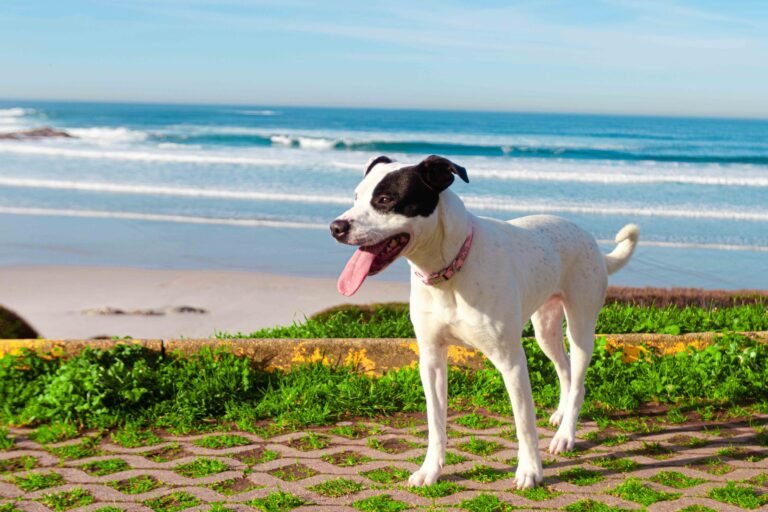
For loose leash walking, especially with pullers: A front-clip (or dual-clip) harness is the safer, calmer default. A prong (pinch) collar is an instrument for short coached sessions only set high and tight to be used as cue, slack (not constant pressure).
Key takeaways
- Daily miles: Harness wins (on the neck is bad, more leverage).
- Precision moments: A good prong can give the lightest of reminders. Then back to that harness.
- If pulling is “the problem”: Train loose-leash on a front-clip harness; do not tow from the neck.
- Handler friendly: quick release buckles (harness) and quick release center (prong) makes exiting a breeze.
What Each Tool Is Built to Do
Harness (Front-Clip/Back-Clip/Dual)
- Front-clip: Redirects your dog’;s pulling force; best for training dogs to walk calmly on a leash.
- Rear-clip: Cozy for leisurely walkers and joggers.
- Dual-clip: Multi-purpose front for control, rear for propulsion.
- Why walkers like it: Shifts load to chest/shoulders (away from trachea), stabilizes the dog’s body and reduces leverage.
Prong (Pinch) Collar
- How it works: Small, rounded links deliver equal and transient pressure around the neck for micro-signals.
- Where it works best: Small precision with short cues in controlled drills ensure a snug high position behind the ears, give tiny cues, followed by immediate release.
- Modern update: Quick-release center clean on/off in elevators, doors, handoffs.
Day-to-Day Differences You’ll Feel
| Focus | Harness (Front/Dual) | Prong (Pinch) |
|---|---|---|
| Pull reduction | Strong (front-clip) | Not the right tool for mileage |
| Neck safety | High (load off trachea) | Depends on fit & handler skill |
| Learning curve | Low → Moderate | Higher (fit + timing essential) |
| Public spaces (lobbies/elevators) | Calm, quick with quick-release buckles | OK if quick-release center; use briefly |
| Best use case | Daily walks, running, crowds | Short, coached precision sets |
Choose by Scenario
You have a freight-train puller:
- Begin with a front-clip harness and 5-6 ft leash.
- Encourage slack steps every 2-3 strides.
- Do dual-clip later as skills develop.
Here’s where you need to work on firm heel/position for 3–5 minutes:
- Fit prong high & even, run cue and slack micros (watch heel start).
- Push quick-release, snap back on to harness for remainder of ride.
- Small dog / airway issues/ brachy breeds.
Rear-clip, front-clip or head halter harness for all walks.
- Maintain a flat collar for ID only.
- I’ve got the doors, and elevators too!
- Quick-release buckle fastener harness for swift fit.
- Prong if necessary 60 -120 seconds in Lobby position and release.
Fit & Handling Essentials
Harness
- Y-front band slides shoulders; straps do not adjust behind elbows.
- Two-finger rule behind every strap; no armpit rub.
- Train with front clip, use rear clip when your dog is perfect.
- Use with locking carabiner when you have a heavyweight puller.
Prong
- Tight and even, circle around behind the top of the ears.
- Adjust it one size larger and never over-tighten.
- Cue give and take immediately; reward calm choices.
- Opt for a quick-release center on safe thresholds.
Common Mistakes (Easy Fixes)
- Attempting to Went pull-effectiveness of the on long walks: Slip toward front-clip harness—pay slack routinely.
- Low prong placement: Re-size with links; if it sags, it’s wrong.
- Turnaround harness: Tighten the belly strap evenly, and make sure it comes behind those elbows; think about a deeper Y-front.
- Perpetual pressure (any tool): Reset: tiny signal skid in UR i/2; shorten sessions & reward more.
FAQs about Pinch (Prong) Collar
Which is safer overall?
A harness, particularly if it’s a front-clip one, for daily walking: Safer on the neck and better control. A prong can even be humane in short, coached drills with the proper fit and timing.
Can a prong stop pulling?
Not by itself. Real-world miles should be walked in a front-clip harness; save prong work for micro-sessions.
Do I need both?
Frequently yes: harness for miles, prong (if used) for the momentary clarity and then disengagement back into the harness.
What about martingales?
They are perfect for getting out of the escape prone mode and mild guidance, but not sealing a fix with extensive pulling. Still a safer bet than miles on a leash.
Plastic-tip vs stainless prongs?
Stainless is the reliable default. Rubber/plastic tips shorten feel; weighing & timing are most important.
Final Thoughts
Use your tools for what is appropriate: the harness can handle miles, crowds and pull management; a correctly fitted prong collar is for short, quiet moments of instruction. Keep the leash on a front-clip harness when life is real, and treat the prong like a scalpel precise, brief, gone. Even slack means immediate treats or praise for your chances of walking better than any label.






